第53章 CHAPTER XVII(3)
Whence come the designs incorporated by these simple weavers into their blankets, sashes and dresses? In this as in basketry and pottery, the answer is found in nature. Many of their textile designs suggest a derivation from basketry ornamentation, which originally came from nature.
The angular, curveless figures of interlying plaits predominate and the principal subjects are the same--conventional devices representing clouds, stars, lightning, the rainbow, and emblems of the deities. These simple forms are produced in endless combination and often in brilliant, kaleidoscopic grouping, sometimes representing broad effects of scarlet, black, green, yellow, and blue upon scarlet, and the wide ranges of color skilfully blended upon a ground of white. The centre of the fabric is frequently occupied with tessellated or lozenge patterns of multicolored sides; or divided into panels of contrasting colors, in which different designs appear. Some display symmetric zigzags, converging and spreading throughout their length. In others bands of high color are defined by zones of neutral tints, or parted by thin, bright lines into a checkered mosaic.
In many only the most subdued shades appear. Fine effects are obtained by using a short gray wool in its natural state, to form the body of the fabric in solid color, upon which figures in black, white and red are introduced. Sometimes blankets are woven in narrow stripes of black and deep blue with borders relieved in tinted meanders along the sides and ends, or a central figure in the dark body with the design repeated in a diagonal panel at each corner.
The greatest charm of these primitive fabrics is the unrestrained freedom of the weaver in her treatment of primitive conventions. To the checkered emblem of the rainbow she adds sweeping rays of color, typifying sunbeams.
Below the many angled cloud group she inserts random pencil lines of rain;or she often softens the rigid lines signifying lightning, with graceful interlacing and shaded tints. Not confining herself alone to these traditional devices, she often creates realistic figures of common objects such as her grass brush, wooden weaving fork, a stalk of corn, a bow, an arrow or a plume of feathers from a dancer's mask. Although the same characteristic styles of weaving and decoration are general, none of the larger designs are ever reproduced with exactness. Every fabric carries some distinct variation or suggestion of the occasion of its making.
Among the Navahos the women invariably do the weaving though in the past a few men were experts in the art. Among the Pueblo Indians the men perform this work. The products of the Pueblo looms are readily distinguishable from those of the Navahos, the latter having far out-distanced the Pueblos in the excellence of their work. Only among the Hopi, are blankets made that in any way resemble the work of the Navahos. Generally a Hopi man weaver can be found at work in the Hopi House, as well as Navaho women weavers.